
You can’t just stick a solar panel on a property and call it an eco-home. You’re going to need to boost your green-credentials more than that if you want to be a carbon-friendly property developer.
This means going carbon-positive, where your new development exports more energy back to the national energy grid than it consumes. In effect you’re creating a mini power plant in your property.
1. Energy sources
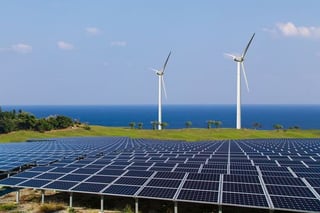
One of the best ways to go carbon positive is through your energy sources. But instead of relying on a single alternative energy source, try combining a number to get the best results.
- Solar: Uses sunlight to produce energy. Solar panels are now often built directly into the roof instead of having panels attached.
- Wind: Similar to solar, attaching small turbines on your property can help create energy.
- Biomass: Organic matter fuel replaces gas or electricity. One example is wood pellets, which are carbon neutral as they only release the CO2 equal to that absorbed by the tree they come from.
- Air heating systems: Trap the sun’s heat and transfers that energy to areas of the property where it is needed.
- Heat pumps: Electricity pumps warm air to cool spaces and vice versa. More energy efficient than radiators or air con.
2. Energy storage
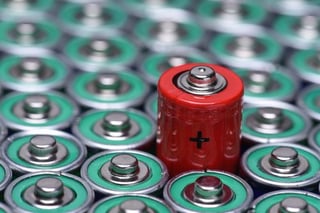
One of the problems with energy generation is that it can be lost if not used immediately as only a set amount can be sold or returned to the grid.
One solution is energy storage, a relatively new technology that stores excess energy you create for use at other times. Tesla is pioneering their use in the UK. Its Powerwall battery is similar to your mobile phone’s battery, but use electricity generated from solar panels to charge and powers your home in the evening.
3. Green spaces
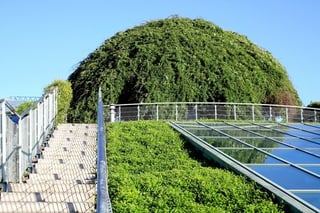
Plants, flowers and trees help convert carbon dioxide into oxygen. This has led to a raft of developers embracing plant life from green roofs to edible walls.
A 1,000 sqm green roof could offset nearly five tonnes of CO2 emissions a year, according to Green Roofs Offset. They also provide high levels of insulation, helping keep the energy you create inside.
Edible walls fit into the trend of people growing their own. And it’s not just retirees with allotments that are embracing the Good Life. Supermarkets, office blocks and restaurants quite often have rooftop allotments, green walls filled with herbs and courtyard gardens. These verdant patches can help cut down on carbon by reducing food transport.
4. Sustainable materials
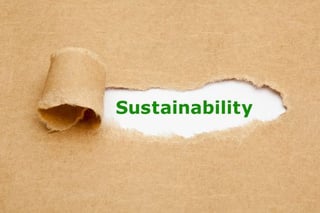
When developing a property, choosing building materials that don’t have a huge impact on the environment is important.
This could mean using sustainably sourced wood, which sees new trees planted for every one removed, making them carbon neutral. In fact, building a house from such timber, instead of brick, cuts down your carbon emissions by ten tonnes, according to the Forestry Commission.
Sustainable materials can be used elsewhere in your home from recycled wool or paper for insulation to reclaimed tiles from old properties.
5. Insulation
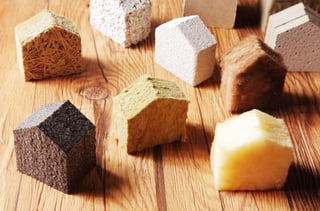
One of the biggest challenges with creating a carbon positive home is making the energy you create work for you most efficiently as much of it is lost to the outside world.
Making sure your home is properly insulated is key. A well-insulated home stays warmer for longer meaning you don’t have to use as much energy to heat it.
Areas to look at for insulation are windows, walls, and the roof. As mentioned previously, green roofs are great insulators while recycled materials can be used to fill cavity walls and roof spaces.
Windows are a key area of insulation. High quality glazing can help let the sun in without letting heat out. Installing Energy Saving Recommended windows can cut CO2 emissions by three-quarters of a tonne per year, according to the Energy Saving Trust.
6. Design
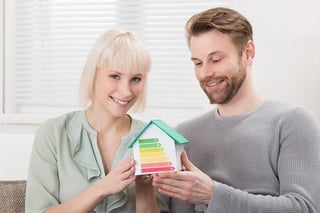
While technology can be added to an existing property to make it energy efficient, if you want a true carbon-positive property you need to think about it from the design stage.
The position of windows, for example, can affect a space’s ability to heat up naturally, while large open rooms are harder to heat so might need to be broken up. Roofs should also be positioned to face the sun so solar panels work more efficiently.
Or it could be simple things like having the living space positioned around the kitchen so the heat from the oven helps keep the area you use most often warm. Light wells throughout let natural light flood into smaller spaces, reducing the need for electric lights to be switched on.
7. On site recycling

Finally, we come to our waste. Through our consumption of food, consumer goods and more, we produce lots of waste. Dealing with this through conventional methods can produce a huge carbon footprint. Even sending your waste to recycling centres means they have to transport it for processing via carbon guzzling trucks.
But you can recycle a lot of items on site. You should be running a compost to deal with food waste, while larger developments can have their own on-site recycling facilities.
Finally, buy only recyclable products and buy local. Buying products online can mean a huge amount of packaging that could be reduced if you bought it from your local store.
